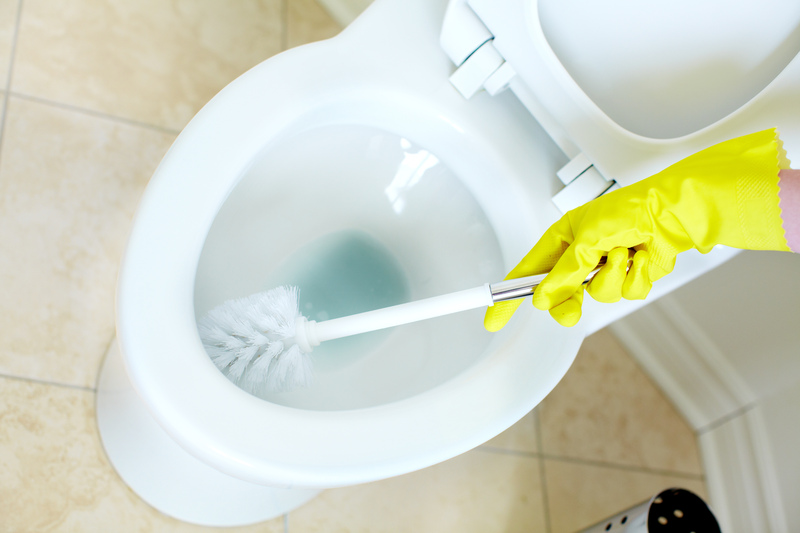Effective Strategies to Maintain a Mold-Free Bathroom Environment
Posted on 20/09/2025
Effective Strategies to Maintain a Mold-Free Bathroom Environment
A bathroom is one of the most susceptible places for mold growth in your home due to its continuous exposure to moisture, warmth, and organic matter. Maintaining a mold-free bathroom environment is essential for your family's health and the longevity of your property. In this comprehensive, SEO-optimized article, you'll discover actionable strategies, expert advice, and simple routines to effectively prevent bathroom mold from taking hold.
Why is Bathroom Mold Prevention Important?
Bathroom mold is more than just unsightly. Left unchecked, it can lead to a host of health problems, damage your home's structure, and result in expensive repairs. Mold releases spores into the air, which may cause allergies, respiratory issues, and other health concerns. Additionally, moisture and mold can weaken grout, tiles, and other building materials. Proactive strategies are crucial for a healthy, mold-free bathroom environment.
The Most Common Places Mold Grows in Bathrooms
- Shower and bathtub corners
- Tile grout and caulking
- Ceiling and walls (especially where steam condenses)
- Behind or under sinks and toilets
- Bathroom rugs and shower curtains
- Window sills and around bathroom mirrors

Top Strategies for Maintaining a Mold-Free Bathroom
1. Control Humidity and Moisture
Moisture control is the foundation of any successful plan to keep bathrooms free of mold. Since bathrooms naturally have higher humidity, managing this is critical.
- Install and use an exhaust fan: Always run the bathroom exhaust fan during and for at least 20 minutes after showers or baths. Ensure the fan vents outside, not just into the attic.
- Open windows: If possible, open bathroom windows during use to allow better airflow and quick drying of moisture.
- Wipe down wet surfaces: After showering, use a squeegee or towel to remove water from walls, tiles, and fixtures.
- Fix leaks immediately: Address dripping faucets, leaking toilets, or faulty seals without delay to limit water sources for mold.
- Use a dehumidifier: In particularly damp climates or if your bathroom has poor ventilation, consider a small, portable dehumidifier.
2. Keep Your Bathroom Clean and Dry
Regular cleaning is crucial for a mold-resistant bathroom environment. Mold thrives on soap scum, body oils, and other organic materials.
- Clean surfaces weekly: Use a mildew-resistant cleaner or a solution of vinegar and water to scrub tiles, sinks, and bathtub surfaces.
- Dry towels and mats properly: Hang towels and bath mats to dry after every use, and wash them frequently in hot water.
- Wash shower curtains: Launder or replace shower curtains regularly to prevent mold buildup.
3. Use Mold-Resistant Products and Materials
Investing in mold-resistant materials can help create a bathroom environment inhospitable to mold.
- Mold-resistant paint: Apply a high-quality, mold-inhibiting paint on bathroom walls and ceilings.
- Waterproof grout and caulk: Use specialized grout and caulking that repel moisture and prevent mold penetration.
- Non-porous surfaces: Choose non-porous shower stalls, tiles, and countertops whenever possible.
- Install glass shower doors: Glass doors dry more efficiently and are easier to clean than certain types of shower curtains.
Step-by-Step Guide to Weekly Bathroom Maintenance
Creating a consistent cleaning routine is one of the most effective strategies to maintain a mold-free bathroom environment. Here's an easy weekly checklist:
- Wipe down tiles and tub: Use a disinfectant or vinegar-based cleaner to remove residues.
- Scrub grout and caulking: Pay special attention to corners and joints where mold loves to hide.
- Clean shower doors or curtains: Run shower curtains through the laundry and scrub glass doors.
- Disinfect sink, faucet, and handles: Remove toothpaste, soap, and grime regularly.
- Mop and disinfect floors: Don't forget behind the toilet and under the sink.
- Empty trash and clean window sills:
- Wash and dry bathroom mats:
Smart Design and Renovation Tips for Mold Prevention
If you're planning a renovation or simply want to fortify your bathroom against mold, consider the following upgrades:
- Install larger windows and skylights: Increase natural light and air circulation to keep surfaces dry.
- Choose moisture-resistant wallboards: Go for cement backer boards instead of traditional drywall.
- Upgrade your ventilation system: Opt for a more powerful or automated exhaust fan with a humidity sensor.
- Seal all joints and seams: Use silicone-based sealants around tubs, sinks, and plumbing fixtures.
- Install slip-resistant, quick-drying flooring: Porcelain, luxury vinyl, or sealed tile minimizes water retention.
Natural and Chemical-Free Mold Prevention
Many homeowners seek eco-friendly ways to maintain a mold-free bathroom. Here are safe, natural solutions:
- White vinegar: Kills 82% of mold species; spray undiluted vinegar on surfaces, wait an hour, and wipe clean.
- Baking soda: Mix with water to make a paste, apply to moldy spots, scrub, and rinse thoroughly.
- Hydrogen peroxide: Use 3% solution to spray on shower tiles and caulking; let it sit 10 minutes before rinsing.
- Tea tree oil: A potent, natural anti-fungal; mix a teaspoon with a cup of water, spray, and leave to dry.
Addressing Persistent and Severe Mold Problems
While preventative strategies are effective, sometimes bathrooms suffer from advanced mold infestations that require professional care.
- Extensive mold patches: If you see mold spreading under floors, inside walls, or over large areas, call a mold remedial expert.
- Recurring mold: Mold that returns despite cleaning suggests a hidden leak or problem with ventilation.
- Suspected health impacts: If family members exhibit respiratory or allergic symptoms, consider mold testing and remediation.
Common Mistakes That Encourage Bathroom Mold Growth
Avoid these frequent errors to better maintain a mold-free bathroom space:
- Neglecting to use the exhaust fan
- Leaving wet towels or clothing in the bathroom
- Allowing moisture to accumulate on windows or mirror frames
- Not repairing leaks promptly
- Using carpets or non-washable rugs
- Skipping regular cleaning and disinfection routines

Routine Bathroom Mold Prevention Checklist
- Ventilate during and after each use
- Wipe excess water from walls and floors
- Address leaks immediately
- Use and clean mildew-resistant shower curtains
- Use vinegar or anti-mold sprays weekly
- Launder towels and mats frequently
- Inspect grout and caulk for signs of mold
Conclusion: A Mold-Free Bathroom Protects Your Health and Home
Maintaining a mold-free bathroom environment is an ongoing process requiring vigilance and commitment. By following these effective strategies--from controlling humidity and intensifying cleaning routines, to using mold-resistant products and materials--you can dramatically reduce the risk of mold growth in your bathroom. Remember, a proactive approach protects not just your bathroom's appearance, but also your family's health and your home's value.
Consistency is key: Incorporate these tips into your daily and weekly routines to enjoy a fresh, hygienic, and healthy bathroom environment free from mold. If you ever encounter a severe mold outbreak, don't hesitate to seek professional help--your health is worth it!
Further Reading: Frequently Asked Questions About Mold-Free Bathrooms
- How often should I clean my bathroom to prevent mold?
Weekly cleaning is ideal, but high-use bathrooms may require spot cleaning daily, especially in humid climates. - Can bathroom plants cause mold?
Plants can increase humidity if overwatered or poorly drained. Choose plants that absorb moisture and ensure proper airflow. - Is bleach the best mold remover?
While bleach kills surface mold, vinegar and hydrogen peroxide are safer and just as effective for most bathroom surfaces.
Adopting these proactive, effective strategies will keep your bathroom sparkling clean, fresh-smelling, and--most importantly--free from the dangers of mold.


